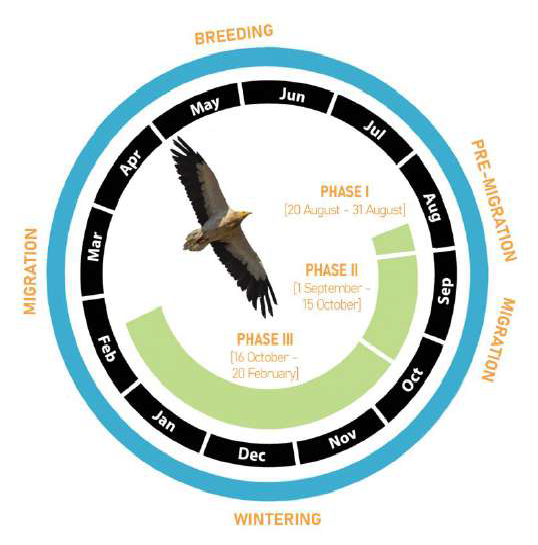Migration is an integral part of the annual cycle of many bird species that have evolved to take advantage of spatially segregated, seasonally abundant food resources while avoiding harsh winter conditions.
However, environmental conditions are changing rapidly, including changes in resource availability and global warming, affecting the movement ecology and behaviour of long-lived species.
Recent studies show that long-distance migrants are shortening their migration routes and start overwintering at higher latitudes closer to their breeding grounds, thus conditions at wintering sites can significantly impact a birds’ annual survival.
During the last decade, Egyptian vultures have been observed in southern Spain, southern Turkey, Crete and Sicily during the winter.
Our study will fill the knowledge gaps on the wintering movements of Egyptian vultures in the Balkan population and will allow for the design of management actions that increase the species’ resilience to environmental change.

Phase I: Fieldwork will take place in Epirus and Thessaly in mainland Greece as well as in Drino Valley, Albania.
Phase II: Migration counts will take place on Antikythira island in collaboration with Antikythira Bird Observatory maintained by the Hellenic Ornithological Society (HOS).
Phase III: Fieldwork will take place in the island of Crete, by collecting through direct observations and PIR-sensor trail cameras placed in the supplementary feeding stations.
Field data collected during each Phase, will be combined with existing satellite telemetry data, collected during the implementation of previous LIFE Projects for the species (LIFE10 NAT/BG/000152; LIFE16 NAT/BG/000874), and will be analysed under a habitat modelling framework to further assess habitat use and possible threats faced by wintering individuals.
Identification
Special markings/characteristics of individuals such as face and plumage markings or rings will be recorded to
facilitate individual identification and assess connectivity patterns of the
wintering population.

